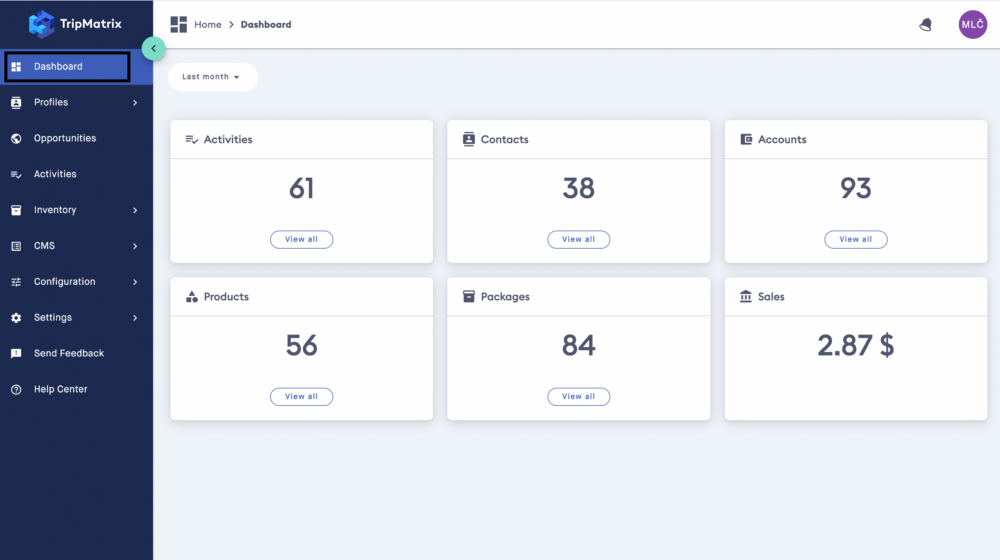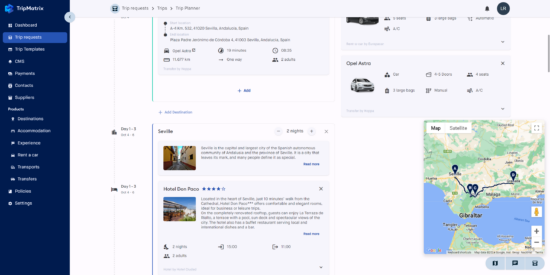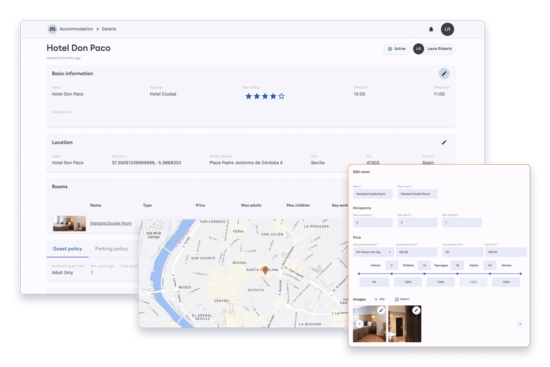Choosing the Right Software for Your Travel Agency: Building vs. Using TripMatrix

In the modern, fast-paced travel industry, the right software can make the difference between outshining competitors and struggling to survive for small and medium-sized travel agencies.
These agencies face a critical decision: should they invest in building custom travel agency software or opt for a ready-to-use solution like TripMatrix?
This choice is pivotal in defining operational efficiency, customer satisfaction, and overall business growth.
This blog explores this dilemma, weighing the pros and cons of custom development against the benefits of using TripMatrix, a comprehensive SaaS solution tailored for travel agencies.
Understanding your travel agency’s specific demands and dynamics is crucial in making this decision.
Let’s delve into what makes a travel agency tick and how software solutions fit into this picture.
Understanding the Needs of Your Travel Agency
Before deciding whether to develop your own custom software or adopt an off-the-shelf solution like TripMatrix, thoroughly understanding your travel agency’s unique needs is essential.
Small and medium travel agencies have distinct requirements that set them apart from larger corporations.
These include managing detailed itineraries, handling complex bookings, and providing personalized customer service while operating within tighter budget constraints.
Key Needs of Travel Agencies:
- Efficient Itinerary Management: Travel itinerary apps are crucial for streamlined trip planning. Agencies need software to easily create, modify, and share detailed itineraries with clients.
- Robust Booking Systems: A website for travel agents should include comprehensive travel booking software. This system must handle a variety of bookings, accommodations, and tours, offering real-time availability and pricing.
- Customer Relationship Management (CRM): Tools to manage customer data, preferences, and history are vital for delivering personalized service and building long-term client relationships.
- Financial Management: Effective accounting tools to track expenses, revenues, and profitability are non-negotiable for any travel agency aiming for financial health and compliance.
These needs are the baseline for any travel agency software solution.
However, the decision to build a custom solution or use an existing one like TripMatrix depends on how these requirements align with your agency’s resources, technical expertise, and long-term goals.
The Challenges of Building Custom Software
Opting to build custom software for a travel agency comes with its own set of challenges, especially for small and medium-sized agencies.
While the allure of having a tailored solution that fits every specific need is strong, the path to achieving this is fraught with complexities.
Technical Expertise and Resources:
-
Custom software development building from the ground up requires high technical expertise. Travel agencies typically need to hire experienced developers or outsource the project, which can be costly and time-consuming.
- Keeping up with the evolving technological advancements and ensuring the software is up-to-date requires ongoing investment in human and technical resources.
Financial Investment:
- The initial development cost for custom software can be significant, often running into thousands of dollars.
- Unlike off-the-shelf solutions, where costs are spread out over many users, custom development places the entire financial burden on the single agency.
Time to Market:
-
Developing software from scratch takes time. This delay in deployment could mean lost opportunities, especially in a fast-moving industry like travel.
Maintenance and Scalability:
-
Ongoing maintenance is a critical and often overlooked aspect of custom software. As your business grows, the software must be scalable and adaptable to new requirements.
- Regular updates, bug fixes, and security patches require a continuous investment of time and money.
Risk of Failure:
-
There’s always a risk that the final product will fail to meet the expected standards or could become obsolete quickly due to rapidly changing technology and market demands.
These challenges paint a picture of the significant investment and risk involved in custom software development for travel agencies.
It’s crucial to weigh negative factors against the potential benefits of a customized solution.
Advantages of Off-the-Shelf Solutions: TripMatrix as a Case Study
For many small and medium-sized travel agencies, off-the-shelf solutions like TripMatrix offer a compelling alternative to custom software development.
TripMatrix, a SaaS (Software as a Service) solution tailored for travel agencies, brings several key advantages.
Immediate Deployment and Ease of Use:
TripMatrix is readily available, eliminating the long development and testing phases required for custom solutions. This immediate deployment means agencies can quickly adapt to market changes and customer needs.
- The user-friendly interface of TripMatrix is designed with non-technical users in mind, ensuring a smooth learning curve for travel agency staff.
Comprehensive Feature Set:
TripMatrix comes equipped with a range of features specifically designed for travel agencies, including travel itinerary management, booking systems, CRM, financial management, and even a customizable travel agency website.
- These features are regularly updated to keep pace with industry trends and user feedback, ensuring that agencies always have access to the latest functionalities.
- Embedded Payment functions and secure payment processes are available for both agents and end-users.
Cost-Effectiveness:
With a commission-based model, the cost of using TripMatrix is significantly lower than developing a custom solution. This pricing structure allows agencies to better manage their budgets without the burden of a significant upfront investment.
- The shared cost model of SaaS solutions means that maintenance, updates, and support are covered without additional charges to the agency.
Scalability and Support:
TripMatrix is scalable, meaning it can easily accommodate the growth of an agency without the need for extensive modifications.
- Continuous customer support and regular updates are part of the package, ensuring that issues are promptly addressed and the software remains secure and efficient.
In considering TripMatrix, travel agencies can leverage these advantages to enhance their operations while avoiding the complexities and risks associated with custom software development.
Comparative Analysis: Building vs. TripMatrix
When deciding between building custom software and using a solution like TripMatrix, travel agencies need to consider various factors.
A comparative analysis can provide a clearer picture of which option best aligns with an agency’s needs, resources, and long-term objectives.
Cost-Effectiveness Over Time:
-
Custom Software: The initial investment is substantial, and ongoing maintenance and updates add to the cost. While it offers a high degree of customization, the financial burden is solely on the agency.
- TripMatrix: Offers a predictable commission-based model. The costs are lower, spread out over time, and include maintenance and updates, providing a more manageable financial plan for small and medium agencies.
Customization Capabilities:
-
Custom Software: Tailored precisely to the specific needs of the agency. However, changes and updates can be costly and time-consuming.
- TripMatrix: While not explicitly built for one agency, it is designed on the real-world travel agency business experience, covering the real needs of travel agencies and offering a degree of customization and personalization. Regular updates ensure that the software adapts to changing industry trends.
Integration with Existing Systems:
-
Custom Software: Can be designed to almost seamlessly integrate with existing systems, though this adds complexity and cost.
- TripMatrix: Offers integration capabilities with popular tools and systems commonly used in the travel industry, facilitating smoother operations.
Time to Market and Ease of Adaptation:
-
Custom Software: Requires a significant development period, delaying market entry. Adapting to industry changes can take a lot of work.
- TripMatrix: Immediate deployment and quick adaptation to market changes due to its SaaS nature.
Support and Maintenance:
- Custom Software: Requires a dedicated team for ongoing support and maintenance.
- TripMatrix: Comes with ongoing support and regular updates as part of the subscription, reducing the workload on the agency’s staff.
While custom software offers tailored solutions, it involves higher costs, longer development times, and ongoing maintenance challenges.
TripMatrix, on the other hand, provides a cost-effective, feature-rich, and scalable solution with robust support, making it an attractive option for many travel agencies.
Making the Right Choice for Your Agency
The decision between building custom software or opting for a SaaS solution like TripMatrix hinges on several key factors.
Small and medium travel agencies must weigh the initial and ongoing costs, the need for customization, time to market, and the capacity for maintenance and support.
Custom software offers unparalleled customization but comes with high costs, complexity, and demands for technical expertise.
TripMatrix, conversely, provides a comprehensive, cost-effective solution with a broad range of features specifically designed for travel agencies.
Its scalability, ease of use, and continuous support make it a pragmatic choice for agencies looking to optimize their operations without the burden of developing and maintaining custom software.
Ultimately, the right choice depends on your agency’s specific needs, resources, technical expertise, and long-term goals.
Considering these factors will guide you to the best decision, ensuring that your software choice aligns with your business strategy and enhances your operational efficiency.
Interested to see how
TripMatrix can supercharge your
travel business?
Request a Demo
Published on: January 5, 2024




